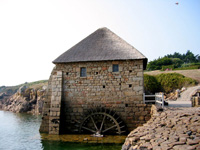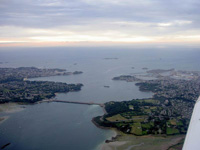Tidal Energy
Brief History of Tidal Energy
People have harnessed the tides and used its energy for many centuries. Tide mills—which are the precursors to today’s tidal power plants— have great similarity to water wheels. The difference is that water must first be collected from the incoming tide before it can be released to rotate the water wheel.
 |  |
| The oldest, excavated tide mill is dated to the year 619. It was discovered at Northern Ireland’s Nendrum Monastery on Mahee Island in Strangford Lough. The power generated by this mill was probably used for grinding grain. | Tide mills became more common during the Middle Ages. A tide mill would have a storage pond which filled up as the tide came in. As the tide went out, the pond emptied and the moving water rotated a water wheel. |
 |  |
| By the 18th century, 76 tide mills were being used in London alone. At one time there were about 750 tide mills in operation around the shores of the Atlantic Ocean. This included about 300 on North American shores, about 200 in the British Isles, and about 100 in France. | The Rance estuary in France was home to some of the historical tide mills. Now the Rance river has the world’s first tidal power generating station. It opened in 1966. As an improvement to early tide mills, it generates power during high tide and low tide. |

